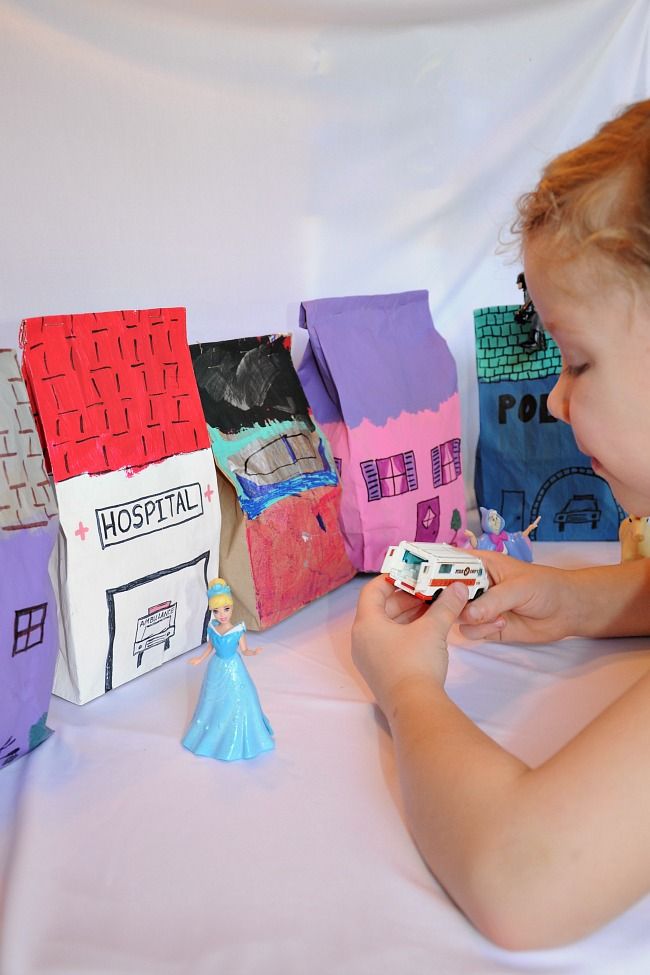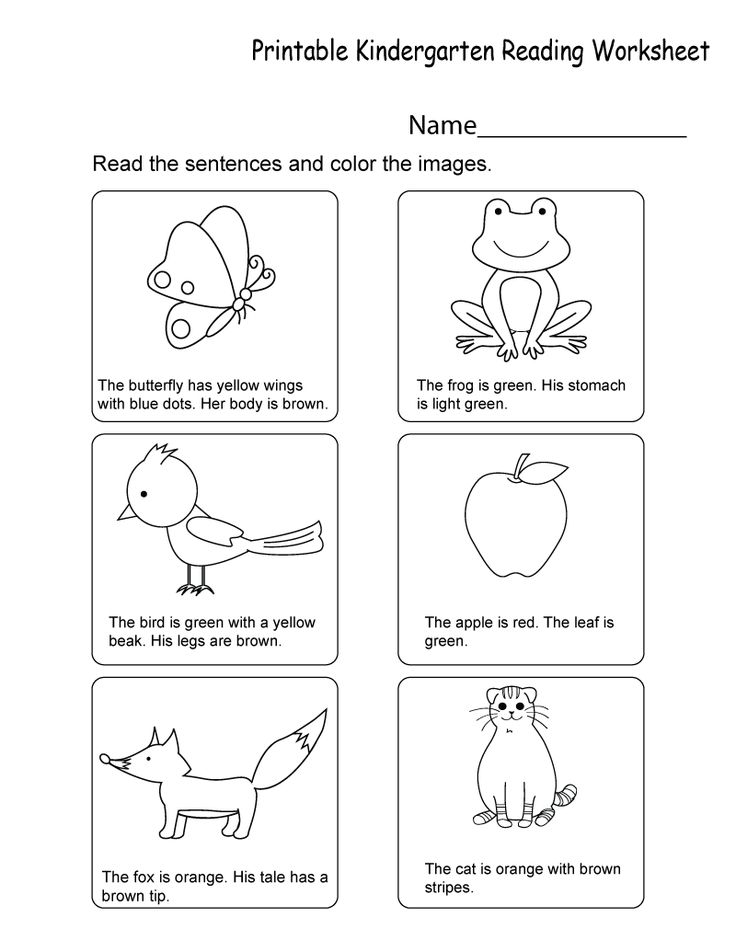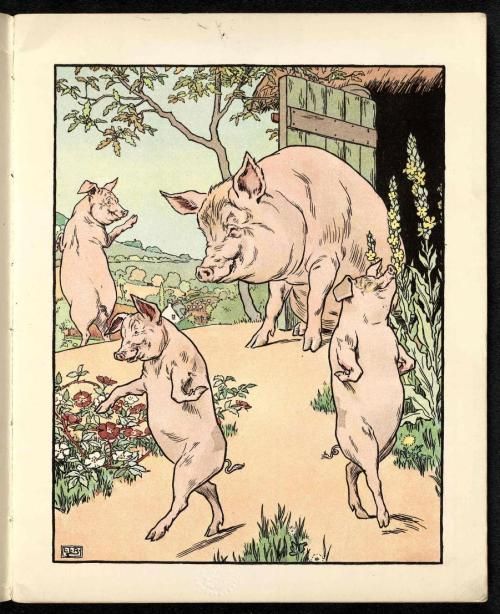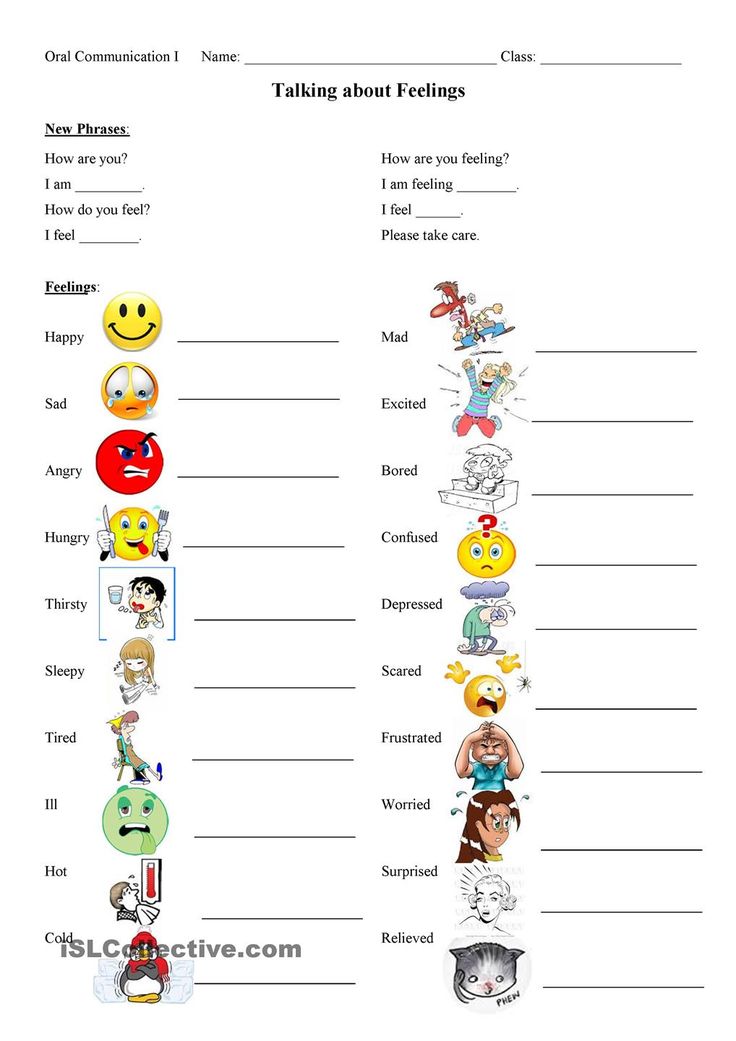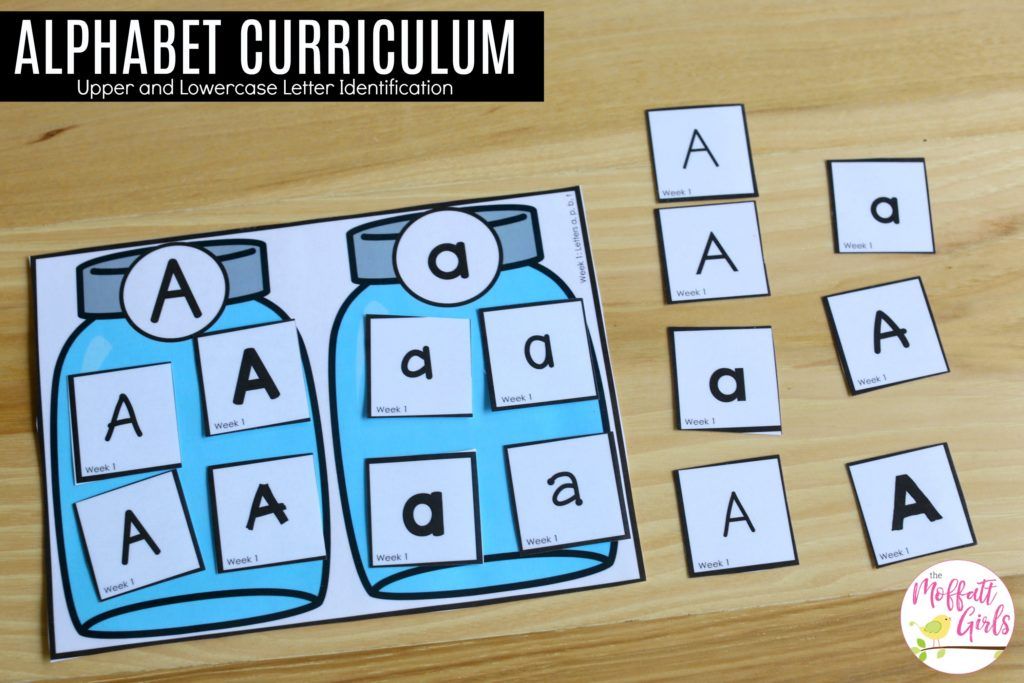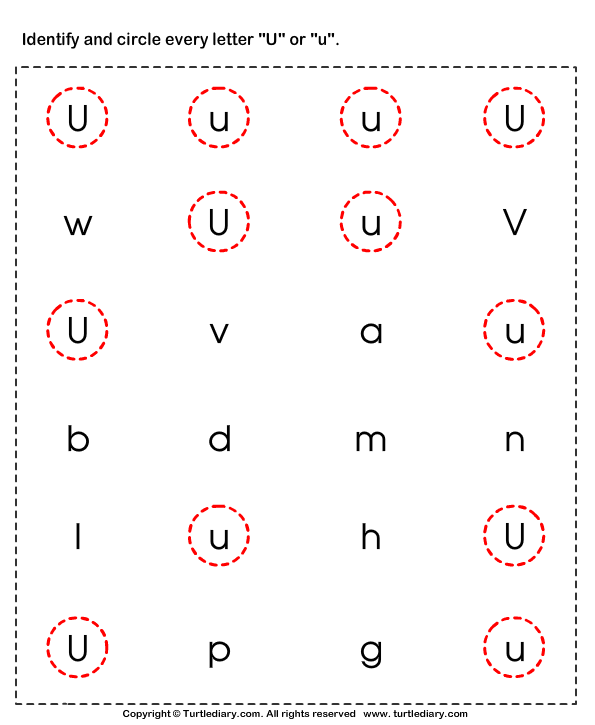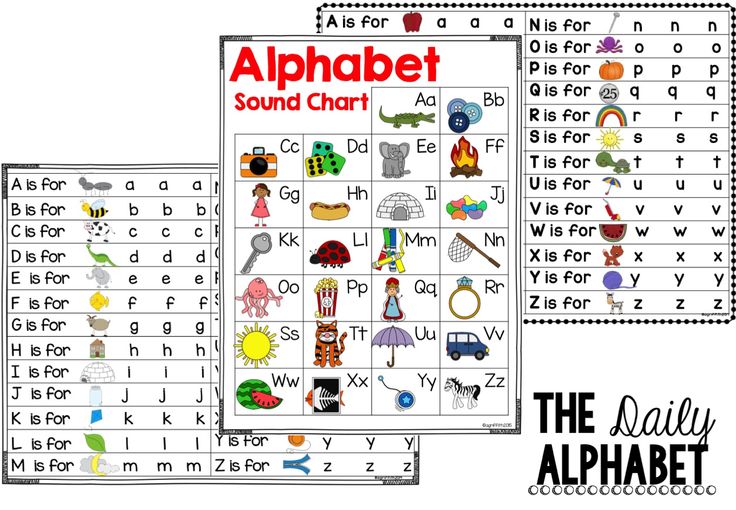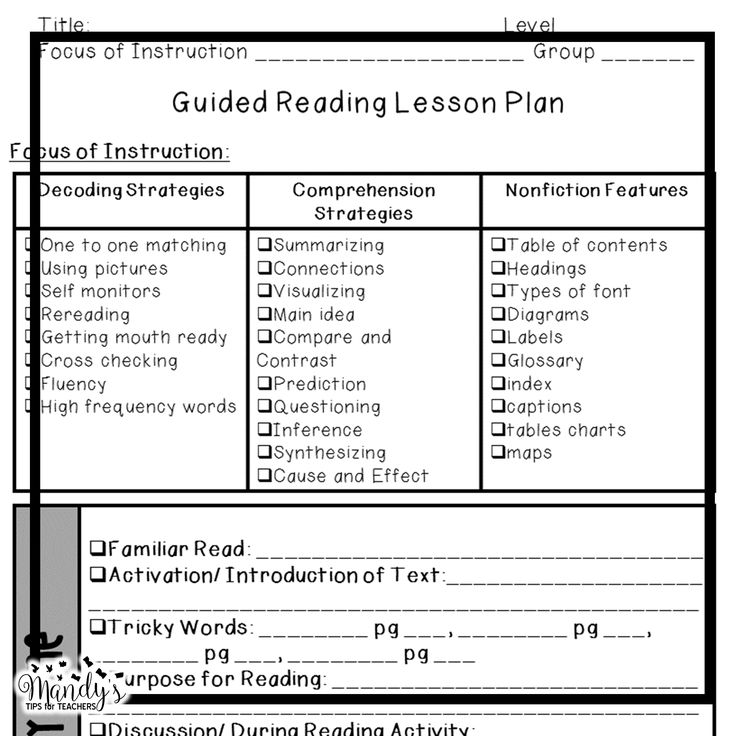Examples of pretend play
The Land of Make Believe
By Lauren Lowry
Hanen Certified SLP and Clinical Staff Writer
The word "imagination" conjures up images of children pretending with dolls, pushing dump trucks, or dressing up as princesses or pirates. While young children do spend much of their time in the land of make believe, the imagination is not just reserved for children's play. It is because of the development of the imagination during childhood that adults are able to do many of the tasks that daily life demands. Adults constantly use their imagination to help them invent new things, visualize, solve problems, enjoy a book or movie, understand others' perspectives, make plans, come up with ideas, and think creatively. No wonder Albert Einstein felt that "imagination is more important than knowledge"!
Therefore, using one's imagination is a critical cognitive skill that is used throughout life, and it is important to encourage the imagination in childhood. But what is the connection between pretend play and language?
The Connection Between Pretend Play and Language
Pretend play and language both involve the same underlying ability to represent things symbolically.
Pretend play is also known as "symbolic play" because it involves the use of symbols. When we use symbols, we use something to stand for something else. In the case of pretend play, children may use one object to stand for another, such as pretending a spoon is a hairbrush, or a tablecloth is a cape. This type of symbolic thought is also needed for language, as our words are symbols. Our words stand for our thoughts and ideas. Therefore, pretend play and language both involve the same underlying ability to represent things symbolically (Weitzman and Greenberg, 2002). It's no wonder children start to engage in pretend play around the same time their first words emerge (between 12 to 18 months). Furthermore, children who have language difficulties sometimes also struggle with pretend play.
Why Encourage Pretend Play?
There are many reasons why parents and caregivers should consider encouraging their child's pretend play skills:
- Your child will gain practice with using symbols. This strengthens the foundation for your child's pretend skills and language skills.
- Pretend play is an excellent way to expose your child to new vocabulary that he may not be exposed to in everyday life, such as "pirate", "sword", "rescue", "castle", or "fairy".
- When you pretend with your child, you will help him learn to play with others. Eventually, your child will start to pretend with other children, where he will learn to take turns and collaborate.
- When children take on a pretend role, they imagine what it is like to be another person. This helps develop their ability to take others' perspectives and develop empathy.
- Pretend play is fun! When you play like a child and let your imagination lead, you and your child will never run out of things to play with or talk about!
How Pretend Play Develops
(adapted from Learning Language and Loving It, Weitzman and Greenberg, 2002)
In typical development, pretend play progresses through predictable stages.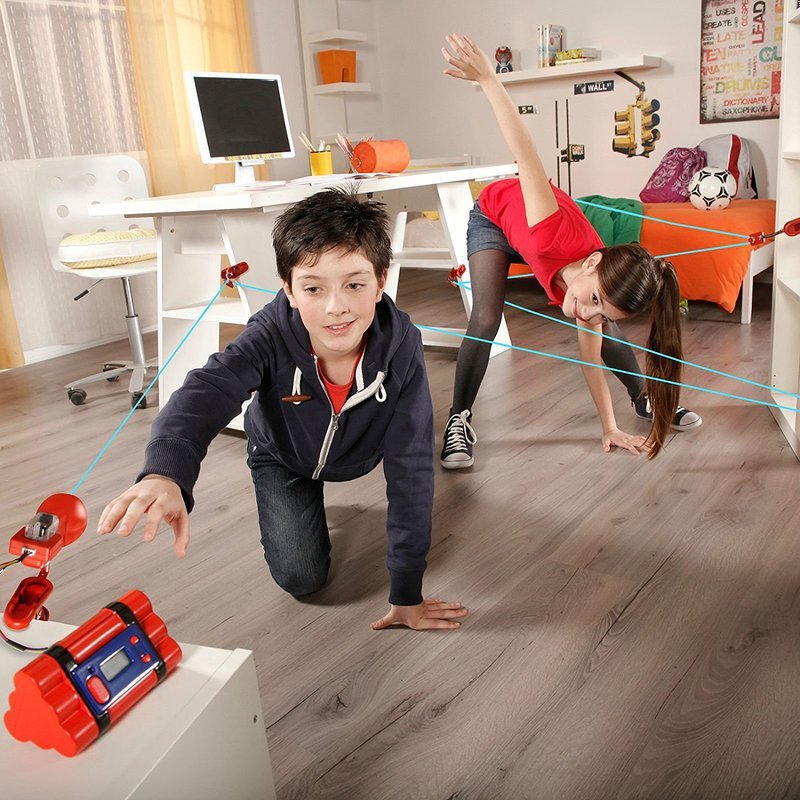 Children with developmental delays may progress through these stages at a slower rate.
Children with developmental delays may progress through these stages at a slower rate.
| Self-pretend | (12-18 months) During this stage, children perform one pretend action at a time on themselves, such as pretending to eat, drink, or sleep. Children tend to use toys that look quite realistic (e.g. a plastic toy spoon) or real-life objects (e.g. a real spoon). |
| Simple pretend | (18-24 months) Children at this stage perform simple pretend actions on toys or people. Children continue to use realistic-looking toys at this stage. Examples of simple pretend play include feeding a doll with a toy fork or making a toy airplane "fly". Children also imitate familiar adult actions at this stage, such as pretending to talk on a toy telephone. |
| Series of familiar actions | (24-30 months) Just as children this age are learning to combine words together to make little sentences, they are also learning to combine pretend actions together.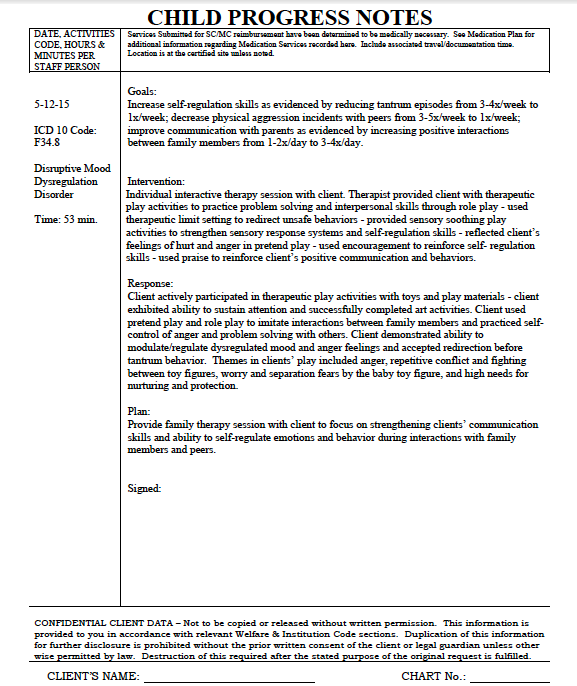 At this stage, children can act out a series of pretend actions related to a familiar routine, such as the steps involved in eating or going to bed. For example, the child may get out a toy bowl and spoon, pretend to pour cereal into the bowl, add some milk, and serve it to a doll. Children can use less realistic objects at this stage, as long as they are similar in shape to the real object. For example, a toy ball could be used as an apple to feed a doll. At this stage, children can act out a series of pretend actions related to a familiar routine, such as the steps involved in eating or going to bed. For example, the child may get out a toy bowl and spoon, pretend to pour cereal into the bowl, add some milk, and serve it to a doll. Children can use less realistic objects at this stage, as long as they are similar in shape to the real object. For example, a toy ball could be used as an apple to feed a doll. |
| Series of less familiar actions | (30-36 months) Less familiar themes enter children's play at this stage. They may pretend about going to the doctor or being a waiter at a restaurant. Children can pretend without an object (they can pretend their hand is a cup and drink out of it). Children can also substitute objects that do not resemble the "real thing". For example, a child can pretend a block is a garbage truck on its way to the dump. |
| Role play with other children | (3-5 years) Children pretend about imaginary themes now (things which do not really exist or that the child hasn't experienced yet in real life), such as pirates, castles, and superheroes. Children start to pretend with other children at this stage, each taking on different roles during the play. Realistic objects and toys are not needed as children can now pretend using gestures, mime, or unrealistic objects. Language often drives the play at this stage. Children explain their roles and use language to act out their role. For example, a child pretending to be a doctor might say to another child "I'm the doctor, you be the patient, ok? Where does it hurt?"
Children start to pretend with other children at this stage, each taking on different roles during the play. Realistic objects and toys are not needed as children can now pretend using gestures, mime, or unrealistic objects. Language often drives the play at this stage. Children explain their roles and use language to act out their role. For example, a child pretending to be a doctor might say to another child "I'm the doctor, you be the patient, ok? Where does it hurt?" |
Encourage Pretend Play – The "Hanen" Way!
Playing the "Hanen" way means getting down to your child's level and playing like a child yourself. By following the simple tips below, you will be stimulating your child's pretending skills and language, and the two of you are sure to have fun in the process!
- Be face-to-face (on the floor, across from each other at a table, etc). In this way, your child will feel connected to you, and he will be able to see your face, gestures, and pretend actions.

- Observe your child's interests. After you have put out a few pretend toys, watch and see what catches his interest. If he picks up a toy phone, play with it. If he starts to push a truck, play trucks. Your child will be motivated to play with you if you follow his lead.
- Don't put out too many toys at once. This can be overwhelming to some children. Select a few key toys that you think your child may like.
- If your child doesn't know how to pretend yet - you might need to start off the play. Pick up a toy your child likes and do one simple action yourself to give your child the idea. For example, you could demonstrate some self-pretend (see above) by picking up a toy cup and pretend to drink, saying "mmm…yummy juice". Then put the cup in front of your child and wait to see if he imitates you. If he doesn't, that toy may not interest your child.
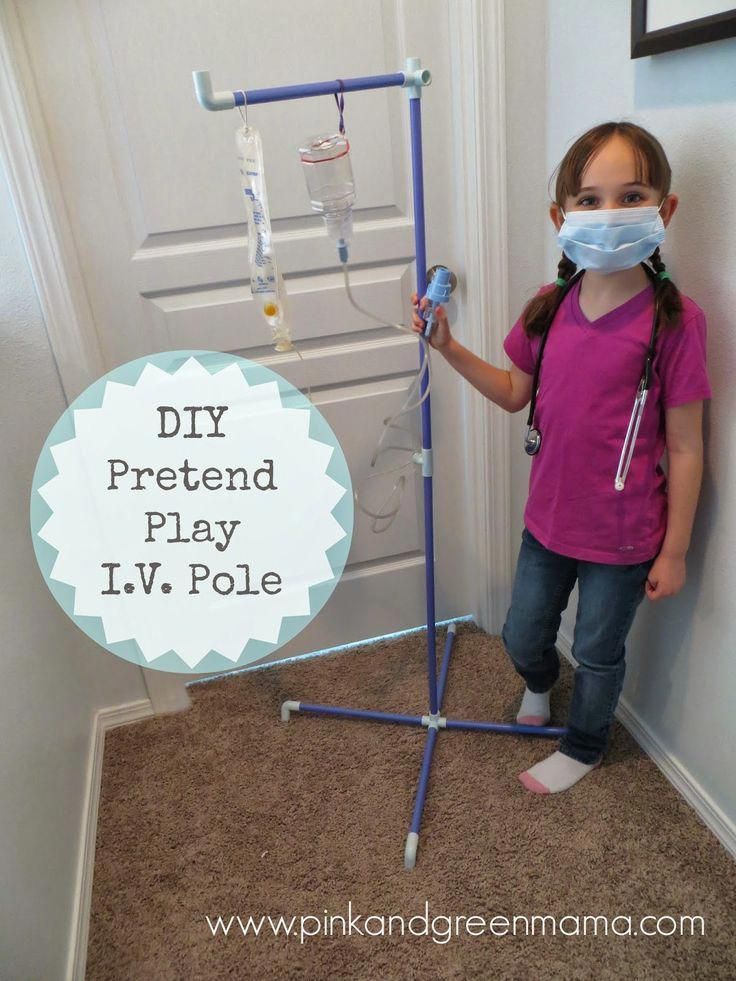 Try to observe your child's interests to determine if something else might be more interesting to him.
Try to observe your child's interests to determine if something else might be more interesting to him.
- Imitate your child's pretend actions. Observe what your child does with his toys, and then imitate his actions. This will likely motivate your child to do more pretend actions! Eventually, you can try introducing a new but related action to the play. For example, if your child has been pushing a dump truck, you can try adding some blocks to the back of the dump truck and dumping them out. Do this once, then wait to see what your child does next.
- Keep it simple. There's no need to introduce too many new pretend ideas at once. Children love repetition and learn from it, so they will likely enjoy practicing any new pretend actions over and over again.
- Don't just watch from the sidelines – get "into" the play! It is easy to become a "narrator" when playing with your child, and provide a play-by-play from the sidelines about what your child is doing.
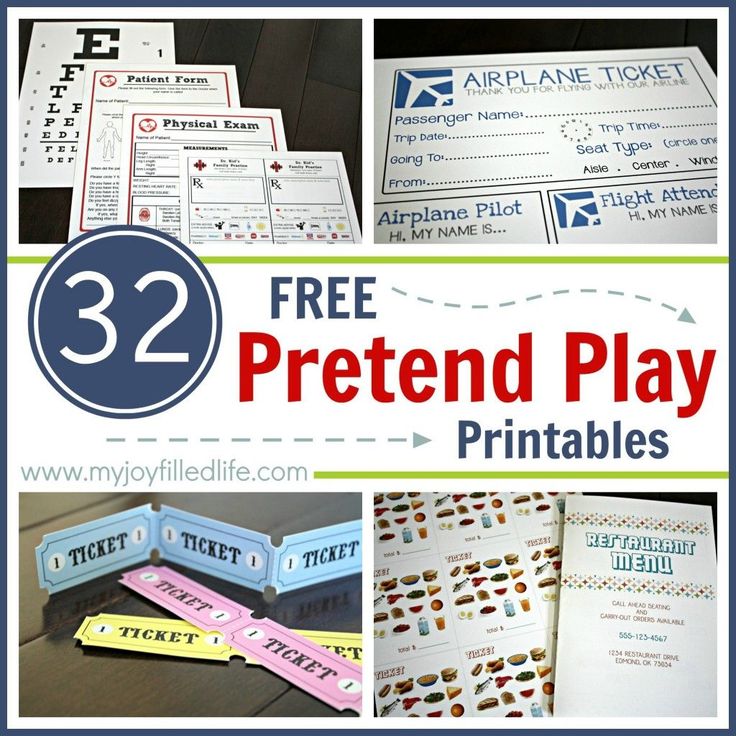 A narrator says things like "Oh, you are feeding the baby. You are taking such good care of your baby". If you have a toy in your hand and play yourself, it will ensure that you are "in" the play and playing with your child, not on the outside providing narration. Being ‘in' the play gives your child more chances to learn because it allows for more interaction and conversation.
A narrator says things like "Oh, you are feeding the baby. You are taking such good care of your baby". If you have a toy in your hand and play yourself, it will ensure that you are "in" the play and playing with your child, not on the outside providing narration. Being ‘in' the play gives your child more chances to learn because it allows for more interaction and conversation.
- Take turns. When children aren't pretending very much, it's easy to take over the play in an attempt to show your child what to do. After you have done something with your toy, be sure to pause and wait so that your child can have a turn to do something. In this way, your play together will be a back-and-forth "conversation", in which each of you has a chance to say or do something.
- Introduce new ideas. For children who can link some familiar pretend actions together, the goal is to encourage less familiar themes.
 For example, if a child enjoys pretending with vehicles, you could introduce a less familiar theme by having the cars break down and taking them to the mechanic. Or perhaps superheroes could drive the cars as they save the day! Or if a child enjoys doll play, you could introduce the idea of a fairy coming to visit the doll, or maybe the doll could visit a castle to see the princess.
For example, if a child enjoys pretending with vehicles, you could introduce a less familiar theme by having the cars break down and taking them to the mechanic. Or perhaps superheroes could drive the cars as they save the day! Or if a child enjoys doll play, you could introduce the idea of a fairy coming to visit the doll, or maybe the doll could visit a castle to see the princess.
- Expose your child to new experiences. Every time you go somewhere new with your child, this becomes the raw material for pretend play. A trip to the zoo can spark a whole new play theme for your child. Books also allow you to introduce imaginary themes to your child which can be incorporated into pretend play.
- Choose the right toys. For ideas about selecting toys that encourage pretend play, read our article "Toys that kickstart the imagination ".
By getting in touch with your own "inner child" and using your imagination, you will discover a new way to connect with your child. When you follow your child's lead, you will learn more about your child and his play interests. Your child will be very motivated to play with you in this way and feel very connected to you. And while it may look to others like you two are just messing around with trucks on the floor, you are really helping your child think symbolically and develop critical thinking skills that he will use throughout his life.
When you follow your child's lead, you will learn more about your child and his play interests. Your child will be very motivated to play with you in this way and feel very connected to you. And while it may look to others like you two are just messing around with trucks on the floor, you are really helping your child think symbolically and develop critical thinking skills that he will use throughout his life.
References
Weitzman, E. Greenberg, J. 2002. Learning Language and Loving It: A guide to promoting children's social, language, and literacy development in early childhood settings. Toronto: The Hanen Centre.
The Hanen Centre is a Canadian not-for-profit charitable organization with a global reach. Its mission is to provide parents, caregivers, early childhood educators and speech-language pathologists with the knowledge and training they need to help young children develop the best possible language, social and literacy skills. This includes children who have or are at risk for language delays, those with developmental challenges such as autism, and those who are developing typically.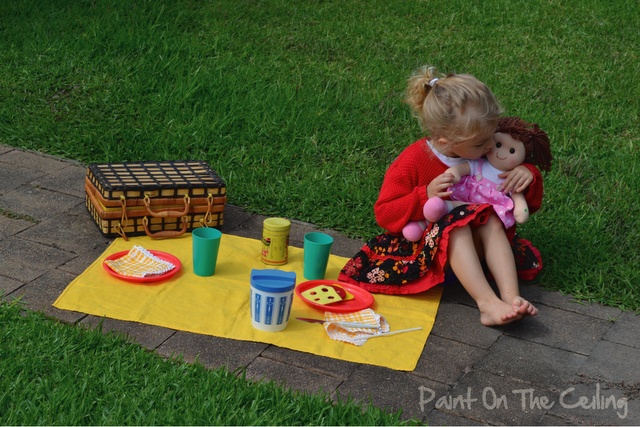
Click on the links below to learn more about how Hanen can help you help children communicate:
Pretend Play: Benefits, Tips & Examples
As your toddler continues to grow and mature, you may begin to see the magic of pretend play in action. Pretend play for toddlers is a central part of their overall development, involving and boosting language, social and emotional skills, creativity, and problem-solving. Read on to find out what pretend play is, what the benefits of pretend play are, and how to encourage your kids’ pretend play.
What Is Pretend Play?Have you ever witnessed your little explorer lost in a world of imagination? Perhaps they are dressed up and zooming around like a fairy or superhero; having a tea party with their teddy bears; or digging for gold in the backyard. All of these examples and more are pretend play!
There isn't a narrow, single definition of pretend play, which goes by other names as well. Sometimes pretend play is called symbolic play, referring to when children use language, gestures, and props to create unreal and imaginary scenarios. Kids' pretend play may also be known as
Sometimes pretend play is called symbolic play, referring to when children use language, gestures, and props to create unreal and imaginary scenarios. Kids' pretend play may also be known as
imaginative play
creative play
make-believe play
fantasy play.
No matter what name is used, pretend play helps your little one grasp the world around them and boosts their physical and cognitive development. You might even see your child mimicking a grown-up or acting out household chores, as pretend play also helps young children learn about social interaction and behavior. Of course, pretend play for toddlers is lots of fun in addition to being an important part of their development.
When Do Kids Start Pretend Play?Pretend play usually begins when your child is between 2 and 3 years old. When your toddler reaches the age of pretend play, they become more aware of the function of objects. You may see them chattering into a toy phone, making siren sounds when pushing along a toy fire truck, or feeding their baby doll.
Then, as your toddler transitions to a preschooler, their pretend play becomes more creative, elaborate, and physical—and there’s no limit to their imagination! Everyday objects become tools for your child’s imaginary world. For example, a blanket can become a cape or modeling clay may be used to make a delicious feast.
The Benefits of Pretend Play
It can be fascinating to watch your toddler’s pretend play and to see how much they enjoy it. As your budding adventurer creates a magical world full of fantastical ideas, they’re learning and developing many important skills. Here are the some of the benefits of pretend play in your child’s development:
Builds language. When your child role-plays or imitates a grown-up, they’ll use words and phrases that they’ve overheard from people around them. Your little one may also begin reenacting or making up their own stories. This helps them understand the power of language and develop their skills.

Fosters social and emotional skills. Through role-play with friends, your child can learn to cooperate with others and experiment with social roles. For example, pretend play with a doll or teddy bear can teach your little one how to take care of something and develop empathy. They may also deal with their own emotions, guilt, and conflicts through role-playing.
Nurtures creativity. When your little one is playing make-believe or dressing up, they are enriching their imagination and creative skills. Perhaps they transform into a doctor or assign roles when playing house.
Encourages problem-solving. Pretend play helps your child learn and develop their thinking skills while solving problems in creative ways. For example, your child may use and develop these skills when building a fort from blankets while preventing it from falling down.
To learn more about the fun of fort building, watch the video below:
5 Tips to Encourage Pretend Play
Your support and enthusiasm will set the stage for your child’s pretend play and all types of development and creative activity. Here are some ways to encourage pretend play for your toddler and preschooler:
Here are some ways to encourage pretend play for your toddler and preschooler:
1. Feed the Fantasy
When your child is in their own little land of make-believe, try not to bring them back down to Earth. Feed into their fantasy by asking them questions about their pretend play. If your child is make-believe playing as a superhero, ask them what superpowers they have or who they have saved today. Who knows—you may even be invited to take on a superhero or nemesis role yourself and join in on the fun! Not only will this form of pretend play be fun for your child, but asking questions can also encourage the development of language skills.
2. Offer Props and Costumes
What better way to encourage kids’ pretend play than providing them with the tools to create their own imaginary world? Costumes and props for pretend play don’t have to cost much either; for example, you can give your little one some of your old clothes (hats, scarves, dresses, etc.) for some fun, inexpensive dress-up play. You could also provide your little explorer with a large cardboard box and other simple objects. You might be surprised at what can spark their imagination. Will they sail the seas in their pirate ship box; transform it into a majestic castle; or fly to the moon in their new rocket ship? Kids pretend play has no limits!
You could also provide your little explorer with a large cardboard box and other simple objects. You might be surprised at what can spark their imagination. Will they sail the seas in their pirate ship box; transform it into a majestic castle; or fly to the moon in their new rocket ship? Kids pretend play has no limits!
3. Encourage Building and Creating
Supply your child with building blocks, construction sets, or art and craft materials and watch them create! Children love to build and use their imaginations to create towers, buildings, magical lands, vehicles, animals, and many other things. You might want to suggest some fun art and craft ideas, such as making masks or paper finger puppets, to provide them with hours of creative fun. Not only does this type of pretend play spark their creativity and imagination, but it also develops their problem-solving skills and hand-eye coordination. You could encourage pretend play by asking them to build the tallest tower or create a dream home for their doll.
4. Read to Your Child
Reading to children from a young age can also encourage pretend play and imagination. Stories can open up new worlds and characters for your little one, as well as promote language skills, and there are so many wonderful children’s books to choose from. Head to the library or consult this list of some of the best children’s books for your toddler for ideas. During reading, you could ask your child questions, such as “What do you think will happen next?” or “What would you do if you were that character?” Story books can hold endless possibility for pretend play; you can encourage your child to act out their favorite part of the story or favorite character. You may even see them reenacting the story during pretend play with friends.
5. Limit Screen Time
In a world dominated by screens and devices, real-life social interactions and pretend play are vital for your child’s development. It’s important to pay attention to how much screen time your little one has each day, and to understand the effects of too much screen time on their development.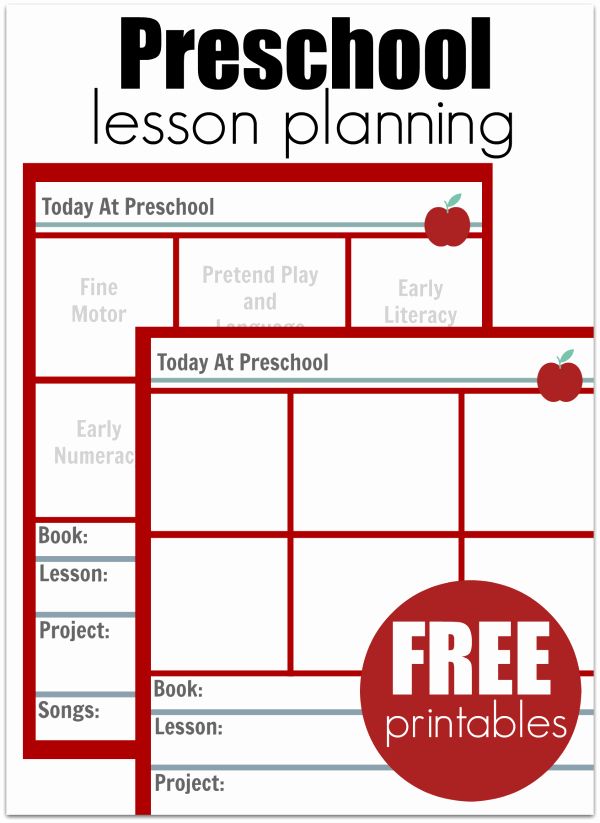
Experts suggest limiting screen time (TV, tablets, smartphones, laptops) to a maximum of one hour per day for children age 2 to 5. When you do have screen time, consider enjoying it together rather than alone. You could watch age-appropriate educational shows or snuggle up together with a fun movie and snacks.
The Bottom Line
Make the most of these magical years as your child launches into pretend play. As they explore the world around them, pretend play will be an important part of their overall development, building language, social, emotional, problem-solving, and creative skills while providing hours of fun. To encourage this development, look on in awe and wonder as they put on a show for you; encourage and support their fantastical ideas; and provide them with the tools they need to nurture their imagination. With Pampers Little Cruisers, your baby can play comfortably all day, so, don’t forget to get rewarded for all those diaper changes on our Pampers Club App!
Examples of role-playing games | Card file (middle group) on the topic:
Why do children love games with transformations
Why do children of different ages like games with transformations? Boys and girls get used to the chosen character, copy behaviors and actions, in general, they feel like a different person or a fairy-tale hero.
What is it that attracts a child in reincarnation? Psychologists say that children like reincarnation because they get the opportunity to express themselves and display some personal qualities and feelings.
The child, becoming someone else, changes his voice and gait, performs actions unusual for him and tries himself in something new. Clothes and attributes help to get used to the image better. It is no coincidence that girls like to try on mom's outfits and shoes, and boys take dad's tools and accessories.
Role play reveals children's abilities, gives courage, opens up opportunities to try something new and unknown. Watching a child play a role-playing game, parents can make discoveries for themselves.
For example, they didn't think that a baby could take the initiative, be neat, caring. Many children show leadership and organizational skills during the game, but this does not happen in ordinary life.
Perhaps it is role-playing games that reveal the true essence and character of babies. Therefore, adults should periodically observe boys and girls playing together.
Therefore, adults should periodically observe boys and girls playing together.
What are the benefits of role playing
What are the specific benefits of role playing? Let's start with the fact that any game for a child is a way of knowing the world, people and himself. Role-playing game allows you to develop communication skills, broaden your horizons, learn to defend your point of view and adequately get out of conflict situations.
Trying on someone else's image and at the same time remaining himself, the child gets the experience of social communication and forms his own character. Participation in the role-playing game of several children contributes to their interaction, the search for mutual understanding and the development of discipline.
What children play helps develop certain skills. Often the game becomes an indicator of the state or development of the child. By repeating the behavior of adults or modeling a lived situation, the child builds his own model of behavior and character traits, shows temperament and develops social skills.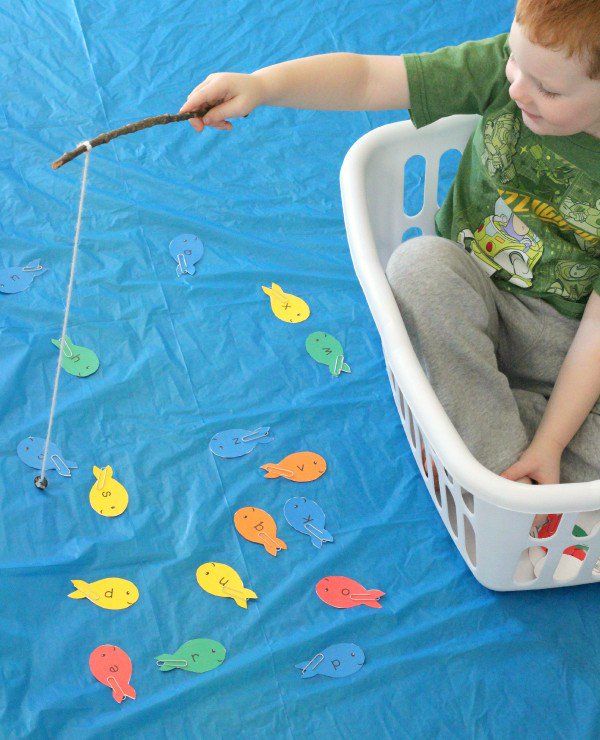
Trying on various images, the baby can better understand himself and learn his inclinations. For example, if a girl loves dressing up dolls and designing clothes for them, it may be a penchant for modeling and design.
The one who makes incredible hairstyles for dolls and girlfriends can become a talented hairdresser.
Boys who are fond of robots and constructors often become engineers and IT specialists.
Therefore, role-playing is also a way for children to get to know themselves.
What are the plots of role-playing games
What are the plots of children's role-playing games? The plot is the basis of the game, without it the action will not happen, since there will be no main characters, events, outcome.
The plots of role-playing games change with the age of their participants. If kids play in the hospital, family, school, kingdoms, then older children choose games in the store, beauty salon, war, business.
Children carefully prepare for the game: they select clothes, props, choose characters and assign roles. Each participant in the role-playing game makes a feasible contribution.
Already during the development of the plot and preparation, a leader is determined who is listened to and consulted.
But there are those who argue and strive to take the place of the leader. A clash of interests between two coordinators can have a different outcome:
- either both will learn to hear and understand each other, and therefore will “work” in tandem,
- or the company of players will be divided into two parts - supporters of one and supporters of the other,
- either one of the leaders leaves the company alone and everyone stays.
Role-playing game Hen and chicks
The whole group or class can participate in the game. The facilitator leads the process. A rope is tied between two chairs at a height of 40-50 cm. On one side there are “chickens” who went out into the yard to peck grains, on the other side - danger awaits them behind the fence - a fox. "Natka", while there is no danger, offers the chickens to pinch the grass behind the fence. At the same time, she says: “Ko-ko-ko” and all the “Chickens” rush under the rope to get to the other side. A carefree walk is interrupted by the leader's signal: "Fox!". And all the “chickens” quickly run away under the rope.
On one side there are “chickens” who went out into the yard to peck grains, on the other side - danger awaits them behind the fence - a fox. "Natka", while there is no danger, offers the chickens to pinch the grass behind the fence. At the same time, she says: “Ko-ko-ko” and all the “Chickens” rush under the rope to get to the other side. A carefree walk is interrupted by the leader's signal: "Fox!". And all the “chickens” quickly run away under the rope.
Role play scenarios
Role play scenarios for children vary by age. Toddlers at 3-4 years old choose certain actions using toys. Girls carry dolls in strollers, bathe them in the bathroom, dress and dress them up. Boys transport blocks in cars, build houses, play with building blocks.
The scenario of such a game is primitive, but nothing more is required for this age. The child learns to perform simple actions, masters skills, develops needs.
Quite often children repeat what happens in their lives. For example, before going to the kindergarten, the girl is washed, dressed, combed, fed.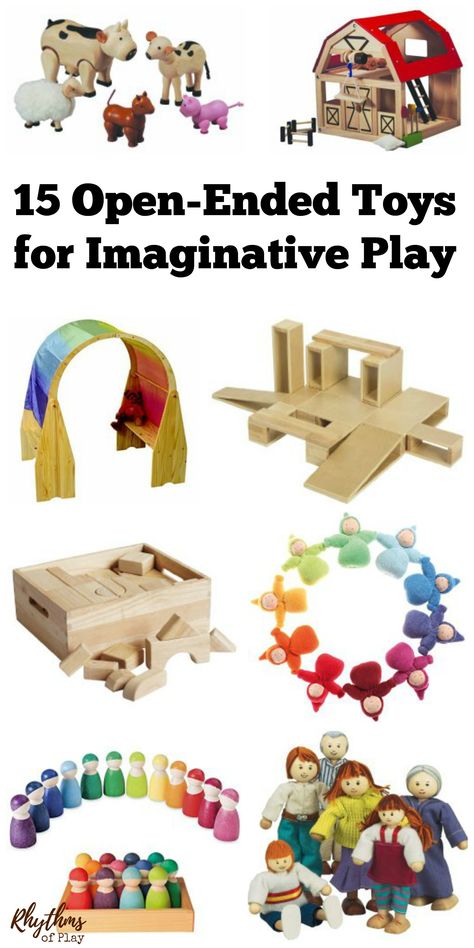 Therefore, the baby transfers these procedures to the doll, and before taking her out for a walk, she collects the toy in a similar way.
Therefore, the baby transfers these procedures to the doll, and before taking her out for a walk, she collects the toy in a similar way.
A little older children begin to choose roles for themselves: doctor, teacher, driver, fireman, policeman, hairdresser, etc. The scenario of the game depends on these roles. The space is formed, the props and other participants in the game are selected.
For example, kids play hospital. To organize a similar role-playing game, you need:
- doctor's office,
- doctor's clothes,
- medical instruments,
- prescriptions and medicines.
Role play - Fairy tale "Kolobok"
7 participants are selected. The principle of the game is the same as in the previous version. Grandfather: I want to eat something! Grandmother: But there is no flour! Gingerbread man: And here I am! Hare: How round you are! Wolf: Gingerbread Man, Gingerbread Man, I'll Eat You! Bear: Get away, little fry! Fox: I'm so hard of hearing! Text of the tale: Once upon a time there was a grandfather (I want to eat something!) And a grandmother (but there is no flour!). Somehow he was sitting on the stove, and then his grandfather says (I want to eat something!). And the grandmother answers him (but there is no flour). How not, says the grandfather (I want to eat something). The grandmother went (but there is no flour) she scraped through the bottom of the barrel, swept the barn and scraped a little. The grandmother kneaded the dough (but there was no flour), she heated the stove and baked a bun (and here I am). The grandmother took (but there is no flour) a bun (and here I am) and put it on the windowsill to cool. And the gingerbread man (and here I am) jumped out the window and rolled along the path, and beyond the outskirts. A gingerbread man is rolling (and here I am) rolling, and a hare is rolling towards him (how round you are). The gingerbread man (and here I am) looked at the hare (how round you are). And he looked at such a miracle and said the hare (how round you are) turned around and gave a tear. And the gingerbread man (and here I am) rolled further.
Somehow he was sitting on the stove, and then his grandfather says (I want to eat something!). And the grandmother answers him (but there is no flour). How not, says the grandfather (I want to eat something). The grandmother went (but there is no flour) she scraped through the bottom of the barrel, swept the barn and scraped a little. The grandmother kneaded the dough (but there was no flour), she heated the stove and baked a bun (and here I am). The grandmother took (but there is no flour) a bun (and here I am) and put it on the windowsill to cool. And the gingerbread man (and here I am) jumped out the window and rolled along the path, and beyond the outskirts. A gingerbread man is rolling (and here I am) rolling, and a hare is rolling towards him (how round you are). The gingerbread man (and here I am) looked at the hare (how round you are). And he looked at such a miracle and said the hare (how round you are) turned around and gave a tear. And the gingerbread man (and here I am) rolled further.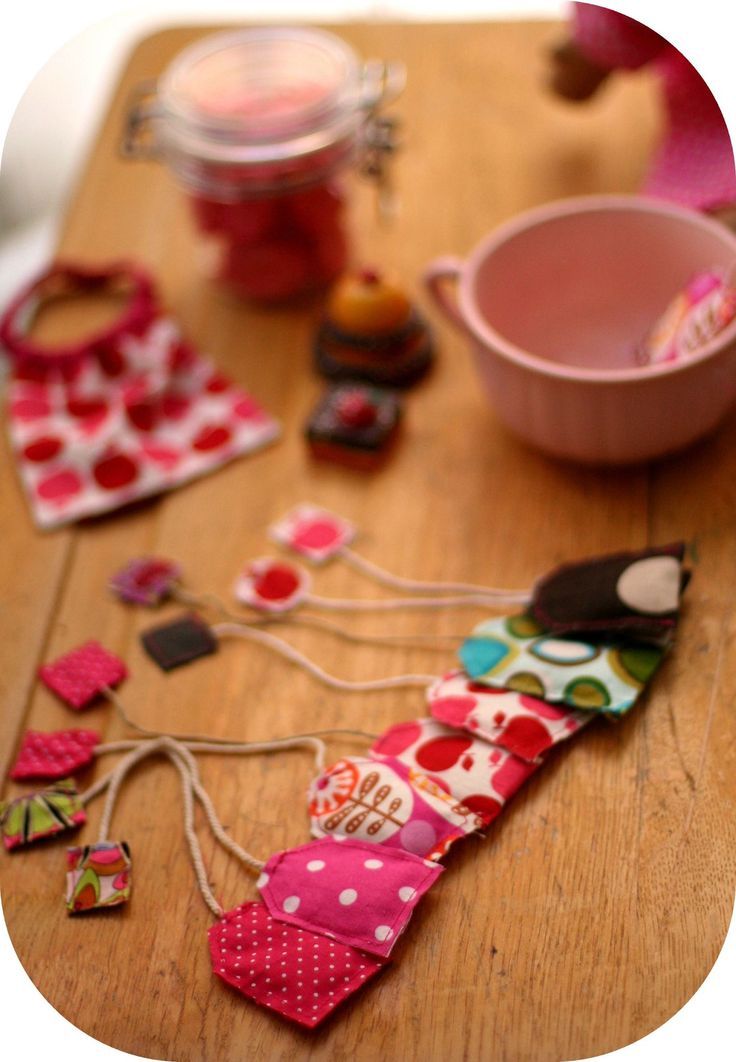 And towards him a gray wolf (bun, bun, I'll eat you). The bun (and here I am) was frightened and rolled in the other direction. And towards him a clubfoot bear (get away, small fry). But the bun is not inferior (and here I am). I saw a round monster and the bear got scared (get away, small fry) and ran away. Only in pursuit the bun called out to him (and here I am). And out of nowhere, a cunning fox appeared from the forest (I hear so badly). And then our protagonist realized that the fox (I hear so badly) does not hear well and then said the bun loudly (and here I am). And the cunning fox (I hear so badly) got even closer to the bun (and here I am). But then, out of nowhere, a grandfather appeared (that is, I want it) and a grandmother (but there is no flour) and were delighted with the newly made granddaughter kolobok (and here I am). This tale ends, and who listened well done.
And towards him a gray wolf (bun, bun, I'll eat you). The bun (and here I am) was frightened and rolled in the other direction. And towards him a clubfoot bear (get away, small fry). But the bun is not inferior (and here I am). I saw a round monster and the bear got scared (get away, small fry) and ran away. Only in pursuit the bun called out to him (and here I am). And out of nowhere, a cunning fox appeared from the forest (I hear so badly). And then our protagonist realized that the fox (I hear so badly) does not hear well and then said the bun loudly (and here I am). And the cunning fox (I hear so badly) got even closer to the bun (and here I am). But then, out of nowhere, a grandfather appeared (that is, I want it) and a grandmother (but there is no flour) and were delighted with the newly made granddaughter kolobok (and here I am). This tale ends, and who listened well done.
Why role play is important for children
Why role play is important for children? While playing, children experience different emotions and experience new feelings. They get different experiences, master the unknown and broaden their horizons.
They get different experiences, master the unknown and broaden their horizons.
In addition, in the process of role play, the child gains experience of social communication. It is ambiguous, since the baby, on the one hand, communicates with a peer, and on the other hand, with who he is playing at the moment: a doctor, teacher, hairdresser, builder.
The skills of communication with a representative of a certain profession are practiced: the child learns to formulate his thoughts, desires, feelings, ask questions, answer questions, seek a compromise and solve problems that have arisen.
Toddlers learn empathy, empathy, try to help someone during the game, fulfill an order, etc. All this contributes to the development of practical life skills. After all, a child gets used to someone's life, trying on someone else's image. Although temporarily, the baby ceases to be himself and becomes a new person, the chosen character.
Role play promotes the re-experiencing of strong emotions.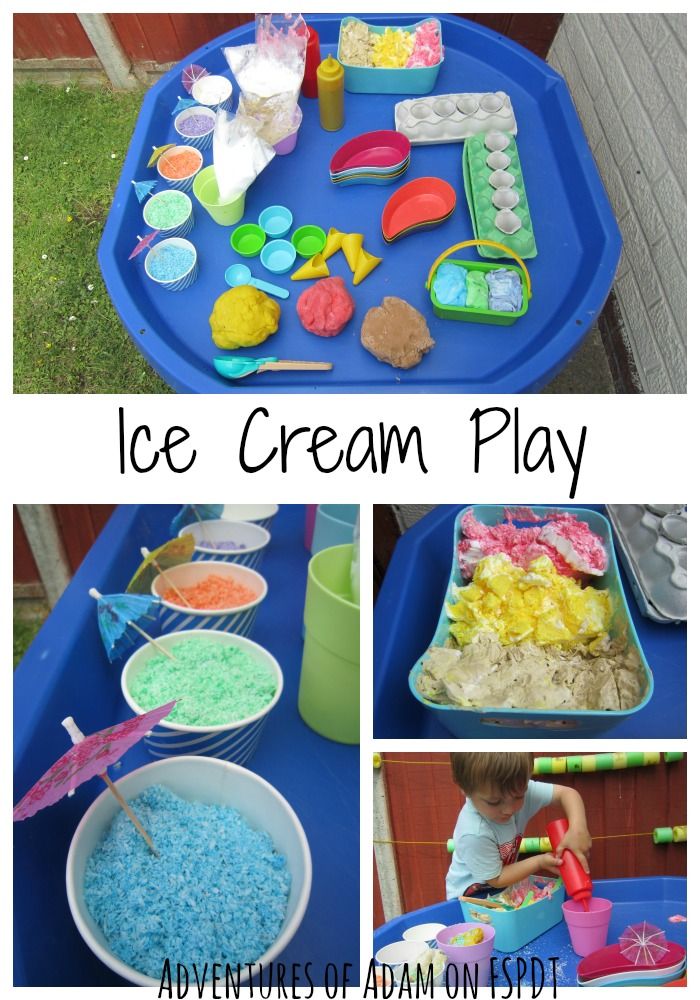 For example, visiting a doctor, a child plays in the hospital for several days and performs procedures that he himself experienced on bears and hares. Having gone to the hairdresser's, the girl tidies up the hairstyles of the dolls.
For example, visiting a doctor, a child plays in the hospital for several days and performs procedures that he himself experienced on bears and hares. Having gone to the hairdresser's, the girl tidies up the hairstyles of the dolls.
If something scared the child, offer a role-playing game in which he can cope with the scary character on his own. If something made you happy, do the same, let the baby once again experience joy and positive emotions.
“How useful are role-playing games for preschoolers? «
How useful are role-playing games for preschoolers?
Play is the most important activity in a child's life. And the games that children create on their own occupy a very special place. They are called role-playing. In them, children reproduce everything that they see around: various manifestations of life, the activities of adults. So the child begins to socialize, that is, to join the children's team, modeling their behavior, developing communicative and leadership qualities, evaluating their actions and peers.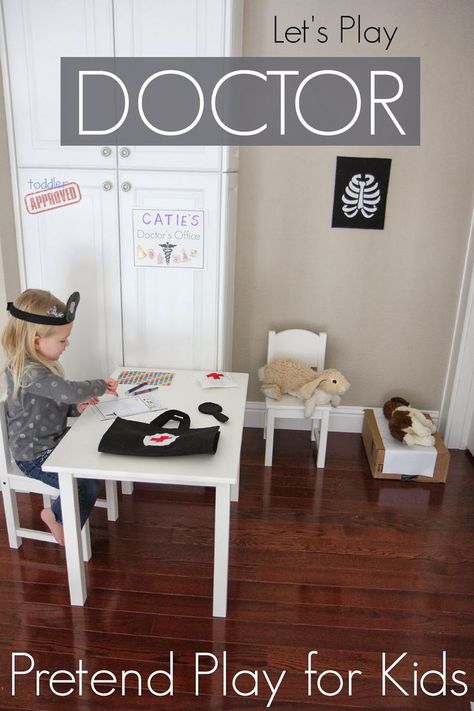
Role-playing game is the main type of play for a preschool child. What is its peculiarity? Describing it, S. Ya. Rubinshtein emphasized that this game is the most spontaneous manifestation of the child and, at the same time, it is based on the interaction of the child with adults. The main features of the game are inherent in it: emotional saturation and enthusiasm of children, independence, activity, creativity.
The main source that nourishes the child's plot-role play is the world around him, the life and activities of adults and peers.
The main feature of the role-playing game is the presence of an imaginary situation in it. An imaginary situation is made up of a plot and roles.
The plot of the game is a series of events that are united by vitally motivated connections. The plot reveals the content of the game - the nature of those actions and relationships that connect the participants in the events.
Plot
- the main element of the role-playing game. There will be no game without him. The plot is the area of activity that children reproduce. While playing, the preschooler reproduces actions, events, relationships from life, while his playing actions (examining the patient, cooking a cake, building a house, etc.) are the main means by which he implements the plot. The plots of the games are different.
There will be no game without him. The plot is the area of activity that children reproduce. While playing, the preschooler reproduces actions, events, relationships from life, while his playing actions (examining the patient, cooking a cake, building a house, etc.) are the main means by which he implements the plot. The plots of the games are different.
“Did you know that the plots of games change over time? Their content depends on the historical period, the state of the country's economy, the natural and geographical features of the area, and cultural traditions. There are also plots of games without time, for example, in the "Hospital", "Family", "School".
The next important element of the game is its content
, which the child embodies with the help of a certain role.
Role
is the main component of the game and the vehicle for the story. The role for the child is his position. That is, the kid, taking on a role, identifies himself with some kind of hero and lives in the game according to the principle of matching this role, based on his own ideas. The role is based on the rules of behavior that the baby borrows from the adult world, adopting the behavior of adults. Already at the age of three, the baby wants to act not only independently, but also as an adult.
The role is based on the rules of behavior that the baby borrows from the adult world, adopting the behavior of adults. Already at the age of three, the baby wants to act not only independently, but also as an adult.
Games for younger preschoolers differ in content from games for older children. This is due to the insufficient experience of children, the characteristics and level of their mental and emotional development, the processes of the cognitive sphere. The baby is not yet able to imagine in his imagination the entire gameplay and catch the logical chain of successive events. Therefore, the content of children's games at first is not entirely logical, fragmentary, somewhat incoherent. In early childhood, babies repeat simple actions with toys that adults show them.
Play is a characteristic form of activity for preschool children
. In games, the formation of the child as a person takes place. In role-playing games, relations of cooperation, mutual assistance, care and attention to each other develop between children.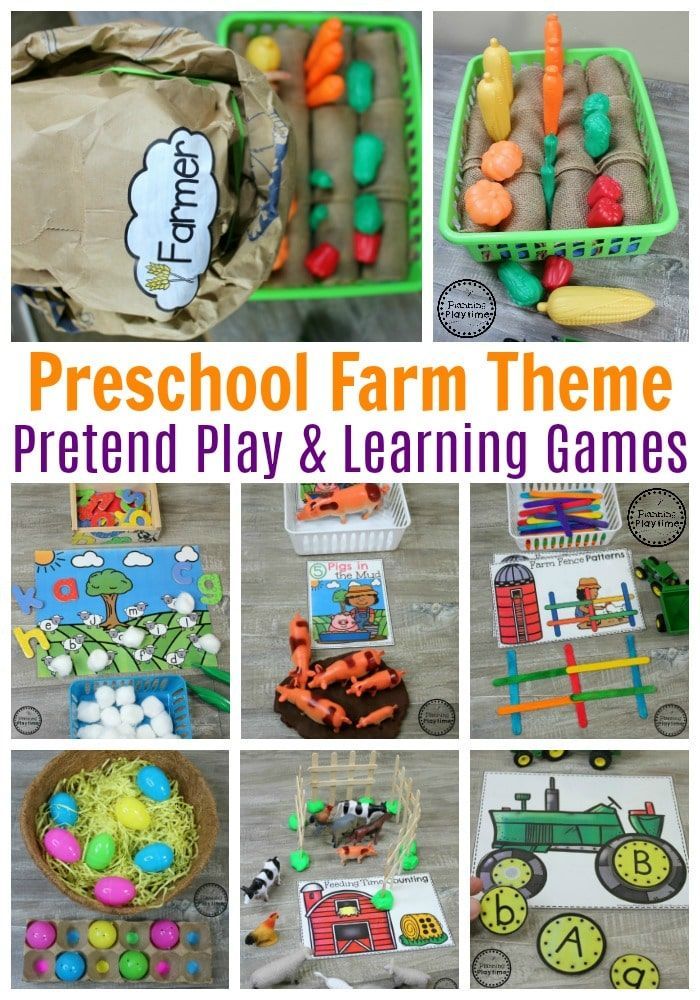 At preschool age, the communication of children becomes longer, and the games are varied.
At preschool age, the communication of children becomes longer, and the games are varied.
Transition to a new game form of communication,
which is characterized by the independence of the child. In games, the child learns to perceive and transmit information, to monitor the reaction of the interlocutor. At this age, the circle of communication of the child expands. Children in joint games look at each other, evaluate each other, depending on such assessments, they show or do not show mutual sympathy.
The child himself will not be able to learn how to play role-playing games, and if he can, then his games will be poor in content and short in time. This is due to the fact that the child has not yet mastered the world around him. The child has not yet formed an idea of the world in which adults exist. The more you play and give your child knowledge about adult life, the more varied and interesting his games will be.
Why a child must play role-playing games
Why should a child play role-playing games? Even though the game is still a game, the feelings that children experience are real. Therefore, the importance of role-playing games is emphasized by many psychologists.
Therefore, the importance of role-playing games is emphasized by many psychologists.
Character games help to learn the main types of communication: role-playing, business, friendly.
- Role-playing communication is learned when kids play hospital, shop, school, beauty salon. They choose roles focused on interaction within the framework of this game: doctor - patient, seller - buyer, teacher - student, master - client.
- Business communication is formed when the game starts. Doctor, seller, teacher, beauty salon master - professions that allow you to earn money. A patient, a buyer, a student, a client are consumers of services that provide income of the first category. During the game, contact is established between the parties and business communication takes place. Children learn to formulate thoughts, desires, requirements for the quality of services, to defend an opinion, to negotiate.
- Friendly communication during the game gives pleasure, brings them together emotionally, and inspires trust.
 Children learn to communicate, listen to themselves and others, find common activities and spend time together.
Children learn to communicate, listen to themselves and others, find common activities and spend time together.
After all, adults do not always manage to find time to play with a child and take walks together. Toddlers who know how to make friends and communicate calmly spend time with each other. And role-playing games also bring benefits to this communication.
No matter how busy adults are, they should from time to time listen to children's conversations during play. Often they help parents get to know the child better and see his problems.
Examples of role-playing games Love and Awareness
This is the final article in the Role Playing series and the trainer training section.
The following example is a complete employee management role-playing game that can be played by 4 people. We will divide the course of the game into three large stages: preparation , conduct , evaluation .
Preparation
The elementary conditions include, first of all, that the participants are “warmed up” for the role play. It is necessary that they feel confident in the training and trust the other participants and the facilitator. Only in this case, it is possible to involve participants in a role-playing game, and after all, the central principle for a role-playing game is voluntariness. Trainer 's job is to provide an open and trusting environment. Among other things, this means that the participants learn what the purpose of the game is. For our example, this might look like this:
All We We know , as

Role-play preparation is best done in four small groups, ideally with 3 to 4 participants.
The following roles are required:
- Head of Human Resources,
- an experienced employee with a family,
- young promising employee,
- experienced, executive employee, no family,
In addition, observers are also needed.
In small groups, the trainer must plan and ensure that the roles fit the participants. Only in this way can a sufficient degree of "Tele" be ensured for the subsequent role-playing.
After the small groups have been formed and each has found a place to work, they can be briefed.
The following order is recommended for briefing:
- observer,
- head of personnel department,
- experienced employee with a family,
- young promising employee,
- is an experienced, executive employee without a family.
Observers receive the following task:
Instruction for Observer
Please think together about the behavior of someone who is a good listener.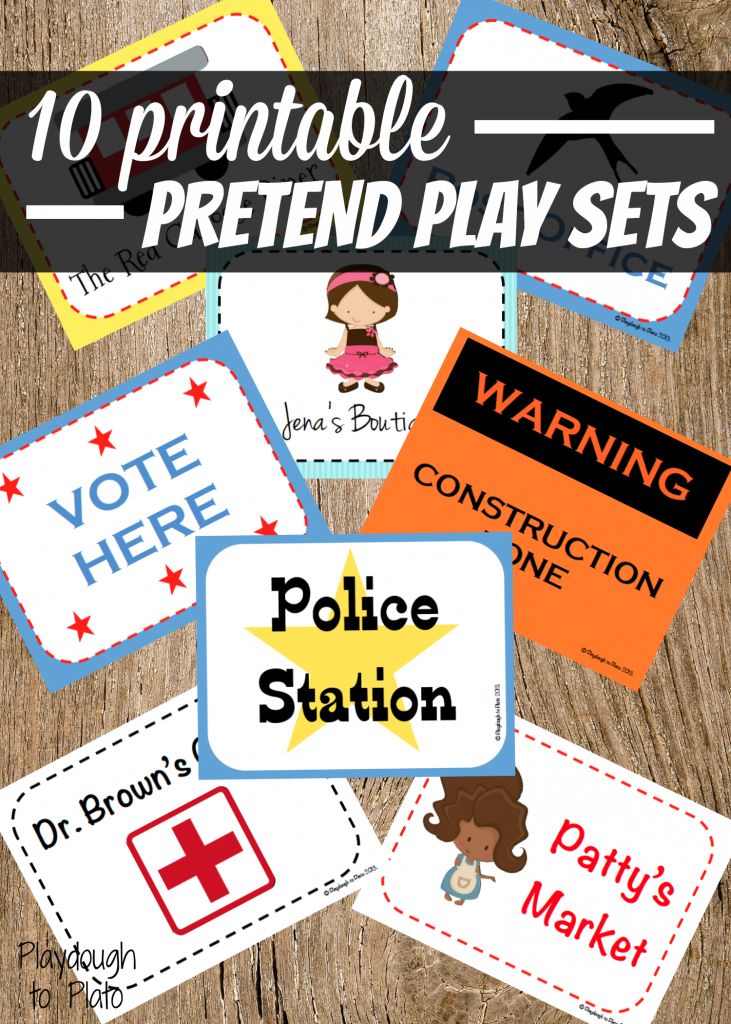 What specific behaviors might be typical for him in conversation?
What specific behaviors might be typical for him in conversation?
Make an overview of these moments of behavior, present it on a large poster. You have 25 minutes for this.
During the role play itself, this list will serve you for your observations.
Group "Head of Human Resources" receives the instruction below, together with the following words:
“Please read your role carefully and strategize together for this situation. Decide for yourself whether you want to communicate with boring employees in turn or at a general meeting. In the group, also find out exactly which of you will play the role of head of the personnel department. You have 20 minutes to prepare.
Role play: "Sending on a business trip"
Description of the situation. About 350 people work at a meat packing plant in a large city. The economic crisis forced the management of the plant to organize procurement centers in various regions of the country, which are engaged in the purchase of farm animals for their processing into meat products.
In the season of harvesting, which began in autumn, the harvester of the Kremensky district of the Luhansk region Polzunov Roman Kirillovich fell ill, and his full recovery is expected in six months. Before leaving for a business trip, the Director of the plant Lisovol Oleg Igorevich requested from his deputy for production Sbitnev Dmitry Bogdanovich to send one of his employees to this area as a procurer for the duration of illness Polzunov Roman Kirillovich. Sbitney is also in charge of the personnel department. To make a decision (whom to send to the Kremensky district), he has 30 minutes , because the director of the plant must know who will replace the sick harvester before his departure. In addition, the reception of livestock should not be interrupted so as not to disrupt the production cycle of the plant, planned according to the plan. Suspension of the reception of livestock even for a short time may adversely affect the fulfillment of the order of a major client, the failure of which will bring great losses to the plant.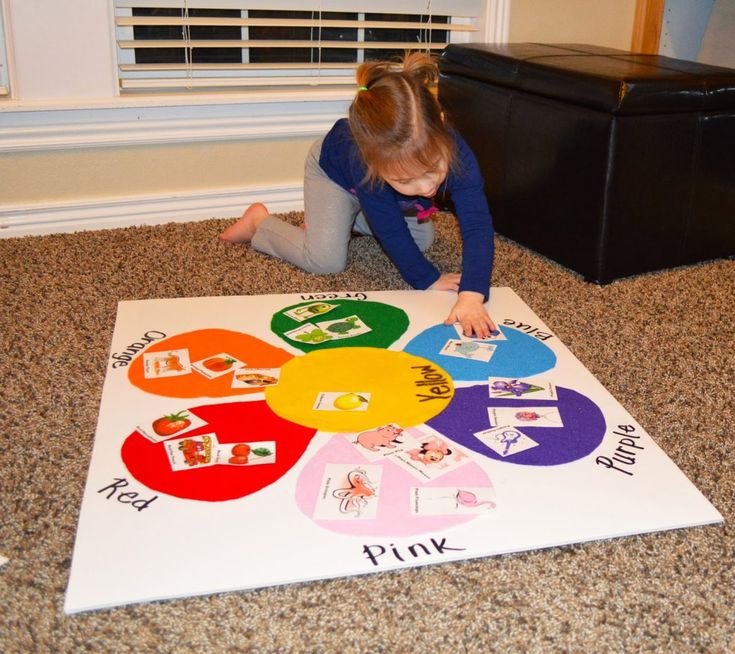
Sbitnev D.B. invites three candidates to his office to determine who exactly to send on a business trip.
Assignment for Dmitry Bogdanovich Sbitnev.
You must select one employee from three people.
Kournikov Valery Pavlovich is an experienced worker, married, has two young children. Sending him on a long business trip can make it difficult to carry out the planned work of the department itself, but if necessary, it can be replaced by Kravets Stepan Stepanovich . Stepan Stepanovich has been working at the plant for only two years. He is considered a promising worker. In addition to them, Lyubov Ivanovna Marchuk works in the department, whose work experience, age and marital status allow her to be sent on such a business trip. She is not married and quite independent.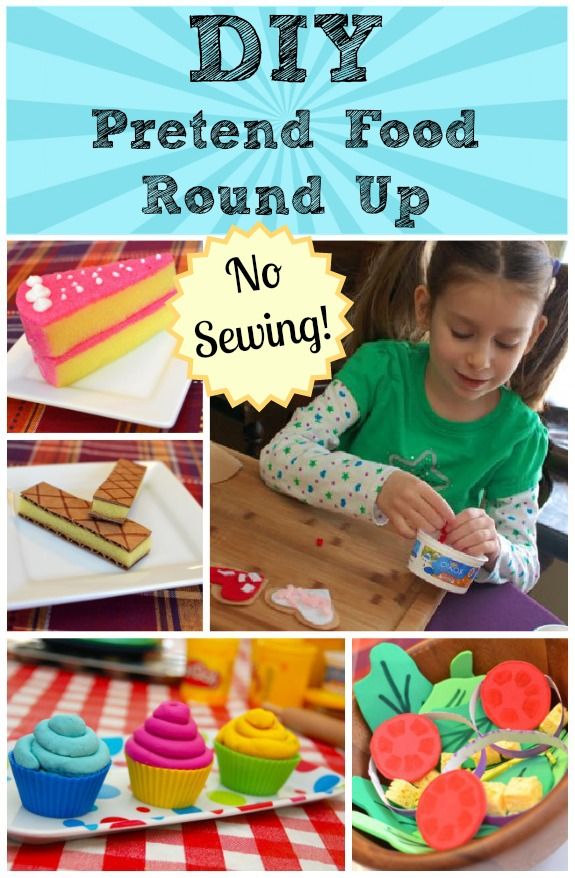 You need to convince one of the three candidates to go on a business trip. In extreme cases, you have the opportunity to go yourself.
You need to convince one of the three candidates to go on a business trip. In extreme cases, you have the opportunity to go yourself.
Group "experienced employee with a family" receives the following instruction:
“Please read your role carefully and strategize according to the situation. Think about what arguments you could justify your refusal, or what conditions could make you agree to go on a business trip. Please also determine in the group which of you will play the role of an experienced employee with a family. You have 20 minutes to prepare.
Role play: "Sending on a business trip"
Description of the situation. About 350 people work at a meat packing plant in a large city. The economic crisis forced the management of the plant to organize procurement centers in various regions of the country, which are engaged in the purchase of farm animals for their processing into meat products.
In the season of harvesting, which began in autumn, the harvester of the Kremensky district of the Luhansk region Polzunov Roman Kirillovich fell ill, and his full recovery is expected in six months. Before leaving for a business trip abroad Director of the plant Lisovol Oleg Igorevich requested from his deputy for production Sbitnev Dmitry Bogdanovich to send one of his employees to this area as a procurer during the illness Polzunov Roman Kirillovich. Sbitnev is also in charge of the personnel department. To make a decision (whom to send to the Kremensky district), he has 30 minutes , since the director of the plant must know who will replace the sick harvester before his departure. In addition, the reception of livestock should not be interrupted so as not to disrupt the production cycle of the plant, planned according to the plan. Suspension of the reception of livestock even for a short time may adversely affect the fulfillment of the order of a major client, the failure of which will bring great losses to the plant.
Before leaving for a business trip abroad Director of the plant Lisovol Oleg Igorevich requested from his deputy for production Sbitnev Dmitry Bogdanovich to send one of his employees to this area as a procurer during the illness Polzunov Roman Kirillovich. Sbitnev is also in charge of the personnel department. To make a decision (whom to send to the Kremensky district), he has 30 minutes , since the director of the plant must know who will replace the sick harvester before his departure. In addition, the reception of livestock should not be interrupted so as not to disrupt the production cycle of the plant, planned according to the plan. Suspension of the reception of livestock even for a short time may adversely affect the fulfillment of the order of a major client, the failure of which will bring great losses to the plant.
Sbitnev D.B. invites three candidates to his office to determine who exactly to send on a business trip.
Role for Valery Pavlovich Kournikov.
Your wife is ill and is in the hospital. Since you do not have your own housing, you rent an apartment. You cannot go on a long business trip, because there will be no one to leave the children with, and there will be no one to look after the sick wife. In addition, there may be some problems in the department during your long absence.
Group "young prospective employee" receives the following instruction:
“Please read the instructions carefully. Develop a strategy for this situation. Think about what arguments you could justify your refusal, or what conditions could make you agree to go on a business trip. Also in the group, choose which of you will play the role of a young prospect. You have 20 minutes to prepare”
Role-playing game "Sending on a business trip"
Description of the situation. About 350 people work at a meat packing plant in a large city. The economic crisis forced the management of the plant to organize procurement centers in various regions of the country, which are engaged in the purchase of farm animals for their processing into meat products.
The economic crisis forced the management of the plant to organize procurement centers in various regions of the country, which are engaged in the purchase of farm animals for their processing into meat products.
In the season of harvesting, which began in autumn, the harvester of the Kremensky district of the Luhansk region Polzunov Roman Kirillovich fell ill, and his full recovery is expected in six months. Before leaving for a business trip abroad Director of the plant Lisovol Oleg Igorevich requested from his deputy for production Sbitnev Dmitry Bogdanovich to send one of his employees to this area as a procurer during the illness Polzunov Roman Kirillovich. Sbitnev is also in charge of the personnel department. To make a decision (whom to send to the Kremensky district), he has 30 minutes , since the director of the plant must know who will replace the sick harvester before his departure. In addition, the reception of livestock should not be interrupted so as not to disrupt the production cycle of the plant, planned according to the plan. Suspension of the reception of livestock even for a short time may adversely affect the fulfillment of the order of a major client, the disruption of which will bring great losses to the plant.
In addition, the reception of livestock should not be interrupted so as not to disrupt the production cycle of the plant, planned according to the plan. Suspension of the reception of livestock even for a short time may adversely affect the fulfillment of the order of a major client, the disruption of which will bring great losses to the plant.
Sbitnev D.B. invites three candidates to his office to determine who exactly to send on a business trip.
Role for Stepan Stepanovich Kravets.
You are a young and promising worker. You are good at computers. Realizing that in the future it will be difficult for you without knowing a foreign language, you signed up for a six-month English language course and paid a fairly substantial tuition fee. Since your studies have already begun, you cannot claim a refund and your studies cannot be continued after your return. To resume your studies, you will have to pay again.
Group "experienced, executive employee without family" receives the following instruction:
“Please read the instructions carefully.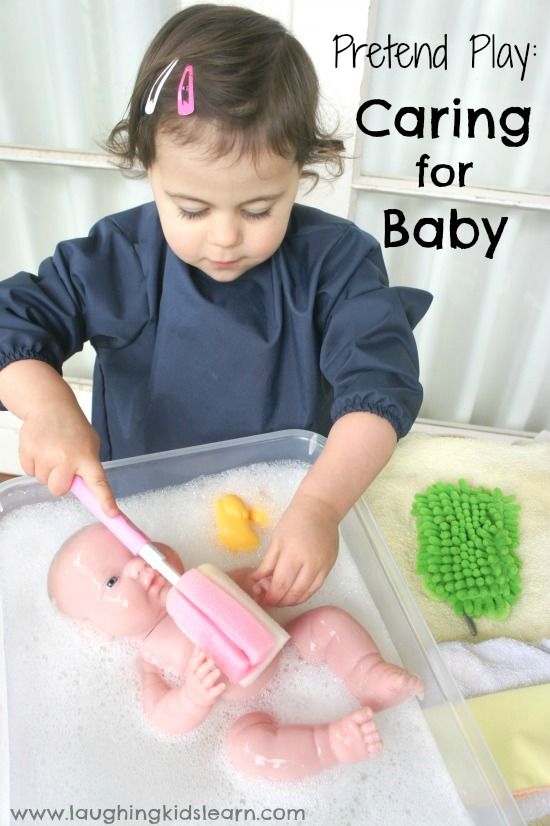 Develop a strategy for this situation. Think about what arguments you could justify your refusal, or what conditions could make you agree to go on a business trip. Also in the group, choose which of you will play the role of an experienced, executive employee who does not have a family. You have 20 minutes to prepare.
Develop a strategy for this situation. Think about what arguments you could justify your refusal, or what conditions could make you agree to go on a business trip. Also in the group, choose which of you will play the role of an experienced, executive employee who does not have a family. You have 20 minutes to prepare.
Role play: "Sending on a business trip"
Description of the situation. About 350 people work at a meat packing plant in a large city. The economic crisis forced the management of the plant to organize procurement centers in various regions of the country, which are engaged in the purchase of farm animals for their processing into meat products.
In the season of harvesting, which began in autumn, the harvester of the Kremensky district of the Luhansk region Polzunov Roman Kirillovich fell ill, and his full recovery is expected in six months. Before leaving for a business trip, the Director of the plant Lisovol Oleg Igorevich requested from his deputy for production Sbitnev Dmitry Bogdanovich to send one of his employees to this area as a procurer for the duration of illness Polzunov Roman Kirillovich.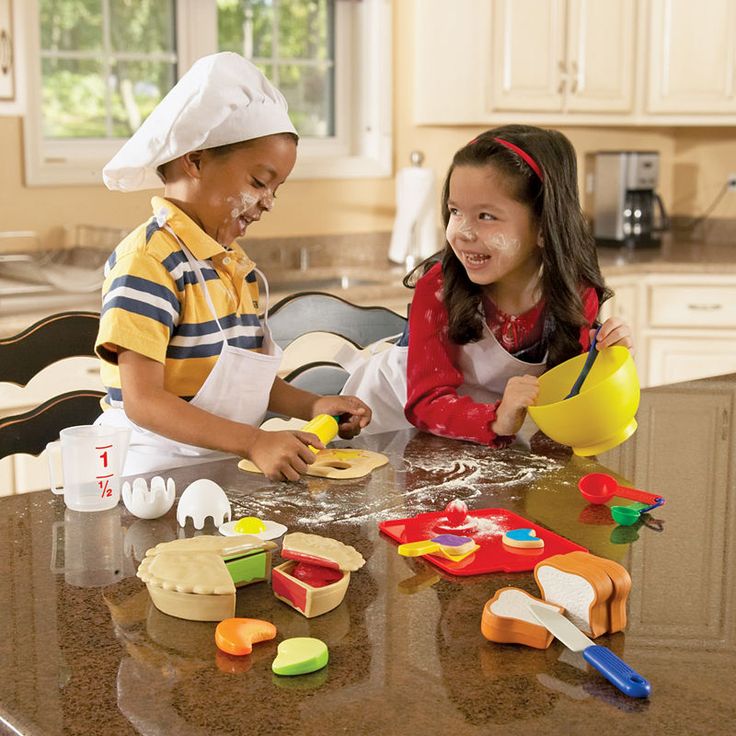 Sbitnev is also in charge of the personnel department. To make a decision (whom to send to the Kremensky district), he has 30 minutes , because the director of the plant must know who will replace the sick harvester before his departure. In addition, the reception of livestock should not be interrupted so as not to disrupt the production cycle of the plant, planned according to the plan. Suspension of the reception of livestock even for a short time may adversely affect the fulfillment of the order of a major client, the failure of which will bring great losses to the plant.
Sbitnev is also in charge of the personnel department. To make a decision (whom to send to the Kremensky district), he has 30 minutes , because the director of the plant must know who will replace the sick harvester before his departure. In addition, the reception of livestock should not be interrupted so as not to disrupt the production cycle of the plant, planned according to the plan. Suspension of the reception of livestock even for a short time may adversely affect the fulfillment of the order of a major client, the failure of which will bring great losses to the plant.
Sbitnev D.B. invites three candidates to his office to determine who exactly to send on a business trip.
Role for Lyubov Pavlovna Marchuk.
You have a very solid work experience, and you will certainly cope with this work, as you have extensive experience in the field of animal husbandry. You, in principle, have no objective reasons, but the living conditions of the future place of residence do not suit you. You are used to living in an urban environment. The lack of a heated hotel, the lack of hot water and, finally, elementary leisure after work are the reasons why you may well refuse to travel, and even if a conflict situation arises with your superiors, you can simply decide to quit, knowing that at the same time, the institution loses a really valuable employee in your person.
You are used to living in an urban environment. The lack of a heated hotel, the lack of hot water and, finally, elementary leisure after work are the reasons why you may well refuse to travel, and even if a conflict situation arises with your superiors, you can simply decide to quit, knowing that at the same time, the institution loses a really valuable employee in your person.
While the small groups are working, the trainer must keep an eye on them. So he will be able to answer their questions and will not forget about the time. In addition, he should use this time to prepare the room for the role play.
Holding
After the groups have completed their preparations, observers take their places, followed by participants from other small groups who will not directly participate in the action. They are given the task of observing how the strategy developed in the group manifests itself. When seating non-playing participants, it is important to pay attention to a clear boundary between the stage and the "auditorium". Finally, the coach once again reminds the audience of the need for discipline. Absolute silence is required, no comments are allowed, no abstract conversations are allowed. Everyone listens carefully, observes and takes notes for further work.
Finally, the coach once again reminds the audience of the need for discipline. Absolute silence is required, no comments are allowed, no abstract conversations are allowed. Everyone listens carefully, observes and takes notes for further work.
The HR manager is the first to appear on the scene, orientate himself, make a small shift to feel better. The role-play then begins, in whatever form he has chosen: either as a series of private conversations or as a general discussion. During the game, the coach must pay special attention to the discipline of the spectators. The role play is over when the HR manager has made a decision and announced it.
Feedback/Summary
After the role play, at first all the actors remain on the stage, but move away from the table with their chairs to sit facing the audience. Only then does the assessment begin, which takes place in several stages and at several levels.
To be effective, an evaluation needs a clear structure and time limits. For a role-playing game, you need to allocate from 30 minutes to an hour for evaluation.
For a role-playing game, you need to allocate from 30 minutes to an hour for evaluation.
At the beginning, the actors themselves are asked , since they bore the greatest responsibility in this situation, and therefore they need to be given the opportunity to get rid of the tension.
This is best done with three questions (asked to each participant, in a circle):
- How do you feel now?
- How satisfied are you with the result achieved?
- How do you rate your behavior during the conversation?
At this stage, it is extremely important that the coach pays attention to the structure and not to mix levels. Participants have a need to talk about everything at once. If this is allowed, you can very quickly end up with an unstructured discussion that makes it difficult to purposefully evaluate. To avoid this, it is best to prepare these three questions on a poster, repeat them again for the actors, and in case they leave them, jump to other topics, consistently and calmly bring them back.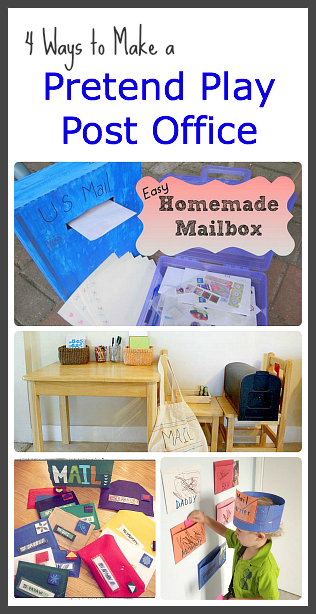
Then the participants who helped prepare the role will take the floor. They briefly talk about what strategy was planned and how it manifested itself, in their opinion. In doing so, the trainer should ensure that these reviews are short and compact.
At the end, observers provide an overview of specific behaviors and describe their impressions of the conversation. Whose behavior did they like the most? It is important at this stage that the observers remain at the level of personal observations and do not move into evaluation or condemnation.
If the conversation was recorded on video, you can view the entire conversation or parts of it. After much has been discussed, participants often reveal additional details themselves. The trainer should pause the recording from time to time to re-emphasize key scenes. Video analysis can also be used to discover new points of interest. Here you can also work with question techniques.